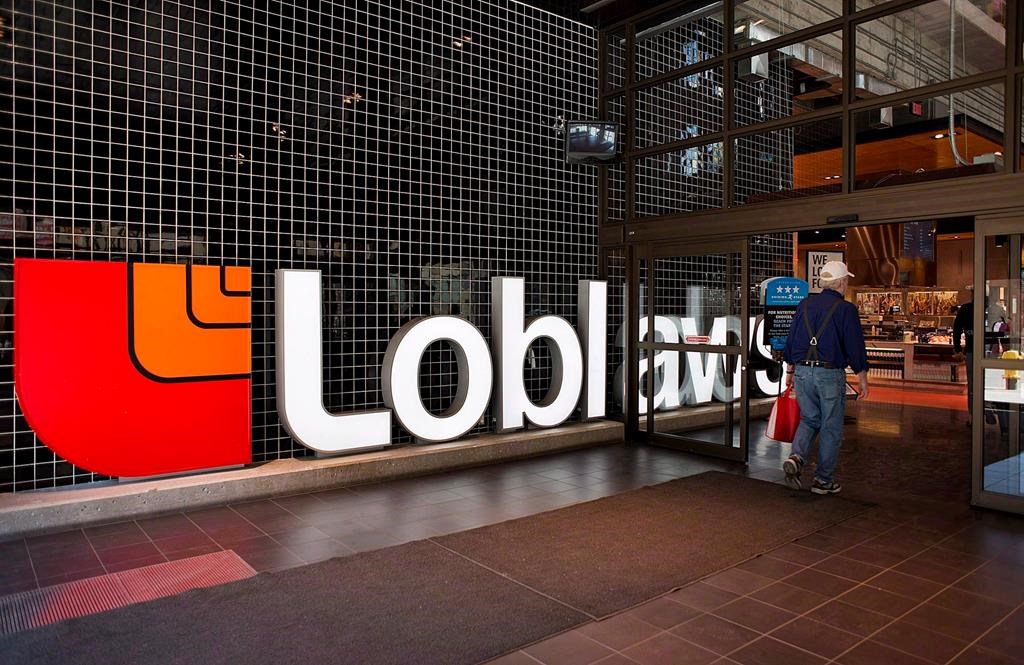As prices at the grocery store continue to cause sticker shock for Ontarians, some are calling for a boycott of one of Canada’s largest grocery store chains — Loblaws.

Some are claiming that it is not inflation driving prices up at the grocery store, but rather “greedflation” or price-gouging at the hands of grocers.
In a tweet Tuesday, television personality and author Gail Vaz-Oxlade asked others to “join in sending a message to the Loblaws group that you do NOT appreciate their profiting and calling it ‘inflation.'”
“Let’s make it clear that we WILL NOT put up (with) these shenanigans,” she wrote.
However, in a statement emailed to Global News, Catherine Thomas, vice-president of communication for Loblaw Companies Ltd., said the “idea that grocers are profiteering from inflation is completely untrue.”
“We make less than 4C on every dollar we sell,” the email read. “This was true before inflation and has not changed for many years.”
Thomas said the industry has been facing “billions of dollars in inflationary pressures, including cost increases and supply chain charges.”
“We continue to do what we can to ensure customers find value in our stores,” the email said.
‘So much more than food’
In an email to Global News, Michelle Wasylyshen, national spokesperson for the Retail Council of Canada, said grocery stores sell “so much more than food.”
She said much of the industry’s growth is being “driven by health and beauty sales” noting that people are returning to work, have begun travelling and are attending social occasions again.
“The hierarchy is that health and beauty have the higher margins; groceries with added value through additional labour (cakes, deli, prepared foods, etc.) sit in the middle; and, staples and packaged foods are the lowest margin,” she explained.
Wasylyshen said according to Loblaw’s quarterly results, the company’s retail revenue results were $12.045 billion, marking an increase of $375 million — or 3.1 per cent compared to the first quarter of 2021.
Those results show that food business accounted for a 2.1-per cent increase, where drug retail increased by 5.1 per cent.
“When looking at the largest retailers, here is what you have on the adjusted net income measure: $1.9 billion in net income for Loblaw on $53 billion of sales in 2021, so a profit margin of 3.6 per cent,” she wrote.
“Metro has 4.7 per cent net income for the year ($823 million on $18.3 billion) and Sobeys’ earned $746 million on $30.2 billion, for a 2.5 per cent net income,” Wasylyshen continued.
She said these are “all within, or very close to, the historical norms for the grocery industry of profits in the 2.5 per cent to 4.5 per cent range.”

Sylvain Charlebois, a professor at Dalhousie University and scientific director at Agri-Food Analytics Lab, told Global News research has shown that there are “no anomalies” in the last five years to suggest “greedflation” at by the three largest grocers in Canada.
“The last five years, we actually dug into the financial statements of the three big grocers of the country Loblaws, Sobeys, and buyer and Metro,” he said. “And we looked at ratios and gross margins and profitability. And there’s no, there’s no anomalies — I mean, it’s pretty consistent for the last five years.”
The report, co-authored by Samantha Taylor, a Professor in Accounting, Rowe School of Business, Dalhousie University found that Loblaws “posted consistent gross margin and profit ratios since 2017.”
The report suggests the company posted gross margins between 29.35 per cent and 31.47 per cent and profits between 1.64 per cent and 3.53 per cent.
“So if ‘greedflation’ exists in food distribution, we don’t know where people calling for boycotts are getting their data, because it’s not, it’s not publicly available,” Charlebois said.
However, Charlebois said he “can’t say for sure” that “greedflation” doesn’t exist.
“But we can’t really see any evidence that it does exist based on available data,” he said.
Charlebois said he believes the call for a boycott is a total “misunderstanding of how food distribution actually works.”
“Grocers get the blunt of the criticism because consumers can relate to a Loblaws a Sobey’s or Metro,” he said. “If there is a problem, it’s deep-rooted into the supply chain.”




Comments